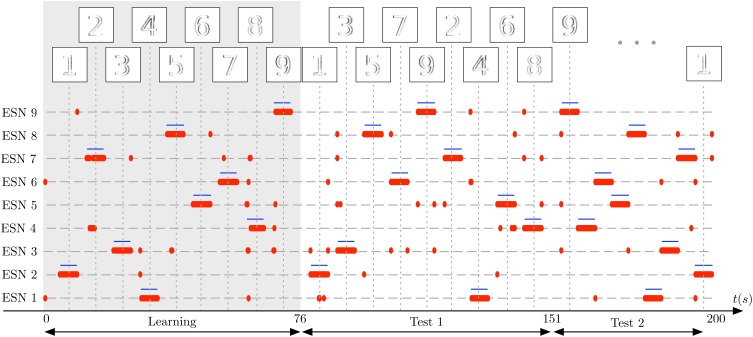Figure 11.
Learning complex features from DVS inputs. The DVS records digits from 1 to 9, each animated with random jitter simulating the effect of microsaccades in the biological eye. Blue horizontal lines show the ground truth, indicating when each number was present in the input, and thus when a specific ESN should fire. The corresponding pattern presented to the camera at that time is represented on top of the figure. Red dots show time points where each ESN is selected by the WTA network. The gray shaded area marks the learning phase, in which every digit from 1 to 9 was presented once to the system. Subsequently, two series of tests are shown: First, in the period marked as Test 1, the 9 digits are presented in random order, but with short pauses between stimulus presentations. Then, in the period marked as Test 2, the digits are presented again in a different random order, but without pauses in between. The results show that also for complex features like digits, every ESN can learn to specialize and represent a distinct feature.

